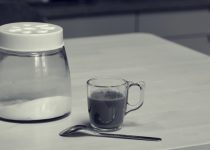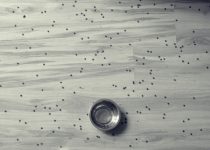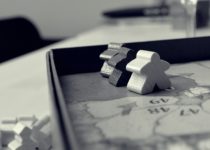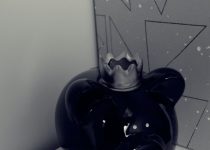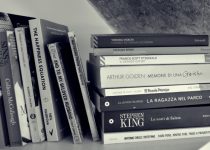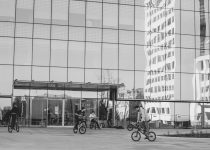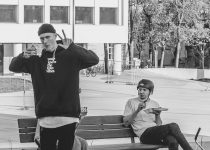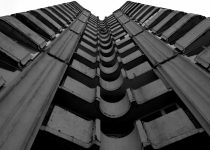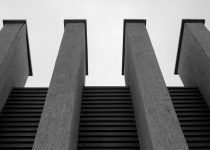VDU kultūros dienos 2020: Menų fakulteto studentų fotografijų paroda
Didžiuojamės galėdami pristatyti VDU Menų fakulteto studentų fotografijas šiuo nelengvu karantino laikotarpiu. Tarptautinė studentų grupė Kūrybinės fotografijos kursą Menu fakultete pradėjo įprastomis aplinkybėmis. Į auditorijas ir fotolaboratoriją susirinko studentai iš įvairių pasaulio šalių ir kartu su Naujųjų medijų meno studentais lietuviais rinkosi temas savo būsimoms fotografijų serijoms. Tačiau šiuos planus netikėtai teko įgyvendinti jau koronaviruso pavojaus akivaizdoje ir karantino sąlygomis. Vis dėlto kūrybingiausi ir atkakliausi autoriai savo sumanymus įgyvendino, o kai kuriems neįprastos aplinkybės netgi tapo įkvėpimo šaltiniu – studentai tarp kitų temų rinkosi vaizdais pasakoti ir apie karantino laikotarpį.
Taigi kviečiame peržiūrėti fotografijas, kurias sukūrė studentai iš Italijos, Kazachstano ir, žinoma, Lietuvos. Galbūt dalis šių darbų liks jūsų atmintyje, kaip šio ypatingo laikotarpio dokumentai, o kiti praskaidrins kasdienybę, suteikdami estetinį pasigėrėjimą.
We are proud to present the photographs created by the students of VMU Faculty of Arts during the tense period of quarantine. International group of students started Creative Photography course in usual circumstances. Students from around the world gathered in a classroom and in a photo darkroom and formulated themes for their future photography series together with Lithuanian New Media Art students. But, unexpectedly, these creative plans had to be realized while facing the thread of coronavirus and obeying the rules of quarantine. However, the most creative and determined authors have accomplished their ideas and for some of them the unusual circumstances have even become the source of inspiration. Students made a choice to tell a visual story of quarantine period among other themes.
So we invite you to view the photographs, created by students from Italy, Kazakhstan, and of course from Lithuania. Perhaps some of these works will remain in your memory as documents of this special period and others will brighten everyday life by giving aesthetic delight.
Abitay Marzhan, Flood in Maktaara, Kazakhstan
There was a flood in Kazakhstan and I decided to take a beautiful photo. In addition to the problem with coronavirus infection, the Turkestan (the region of Kazakhstan) was faced with yet another disaster – flooding, which was the result of a dam break in Uzbekistan.
On May 1, in Uzbekistan, in the Syrdarya region a breakthrough of the dam of the Sardoba reservoir occurred. A powerful stream of water hit the settlements in the Sardoba, Akaltyn and Mirzaabad regions, from which more than 60 thousand people had to be evacuated. There are no deaths, only damaged buildings, roads, communications, and crops.
Maria Vittoria Agostinelli, Time will show us all
The current situation of quarantine, caused by Coronavirus (COVID-19), is having a big global impact. In Lithuania the quarantine started on the morning of the 16th of March 2020. It is the first time in my life, as well as for many of others, to experience such a situation. This situation is the biggest challenge I have faced so far. Without a tool box or an instruction leaflets on a strategies how to cope with this situation. I believe we are all experiencing new emotions and no matter how confusing and challenging it may get, it will most certainly have an ultimately positive effect on my (our) future, because I will have at the very least, made it through. Spending a lot of time in contact with others for different reasons, self-isolation has allowed us of taking a break from the daily routine. Disconnecting, pausing from the usual frenetic life and catching a breath, has been given some different aspects and surprises. Finding time for “yourself”, some “me- time”, like reading a book, catching up with friends and family (most likely to be in a similar situation) via a social platform, a cooking or watching a series of films. All those things that people did not have time to appreciate before. Thus, to approach the current situation, people might have discovered new skills and passions. Even when sometimes the time seems no longer working, like broken. We are living in disarticulated and unfinished days, altered time, where everything is the same, but at the same time everything is different. I believe that this extraordinary situation will remain in our memory, effecting every single one of us, of course not in the same way, instead of going “back” or returning to “ normal” after quarantine, there is a possibility of going forward, exploring new-born emotions and the body in a new innovative form. Time will show us all.
Matas Žoginas, Rebels
Hard times came unexpectedly, our daily lives changed a lot, and we’re forced to stay at home and to practice social distancing. Most of the people try to avoid going outside, but not all of them. Even though these times require drastic measures, for some people these times have positive changes. For example, BMX riders now can ride freely without people interfering. Let’s just say, that Kaunas became one giant skate park and these bad boys love that!
Ugnė Vedeikaitė, Socmodernizmo fenomenas
Paskutinis žurnalo „Savivaldybė“ numeris 1940-aisiais metais okupuotai Lietuvai žadėjo permainas. „Greitu laiku visoje šalyje užvirs grandiozinė socialistinė statyba“, buvo teigiama pirmajame jo puslapyje. Gana greitai buvo imtasi griežtos ir sistemingos čia dirbusių architektų kontrolės, pradėta architektūrinio peizažo pertvarka, kurios priešakyje stovėjo vadinamasis „stalininis“ stilius, išreiškęs šaltą, oficialų, persmelkiantį monumentalumą, tokiu būdu simbolizuodamas gniuždantį sovietinės sistemos poveikį paprastam žmogui. Architektūros ir politikos sąveikos čia reiškėsi itin glaudžiai, o architektūra buvo neatsiejama socializmo statybų dalis.
Siekiant pabrėžti fotografuojamų architektūros objektų fasadų linijas nuspręsta jas pateikti nespalvotas, tokiu būdu neblaškant žiūrovo dėmesio nereikšmingomis detalėmis, palengvinant susitelkimą į konkrečią formų bei tūrių estetiką. Taip pat, dėl estetinių priežasčių pasirinkta seriją fotografuoti apniukusiomis dienomis – lietuviška dargana ir pilkas dangus išryškina sovietinės okupacijos laikotarpio architektūros emociją ir brutalumą.







